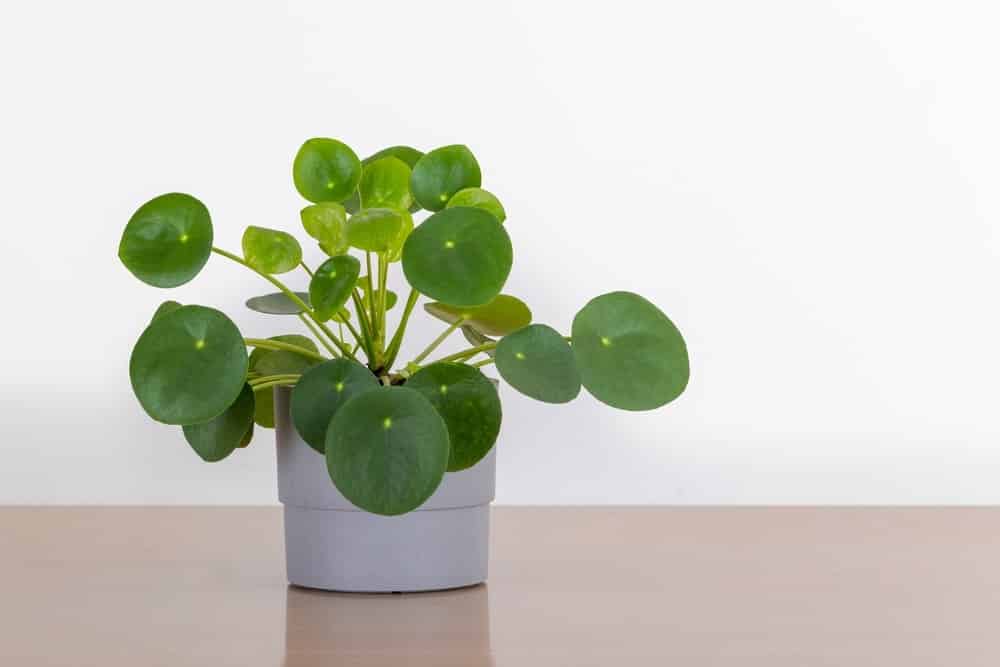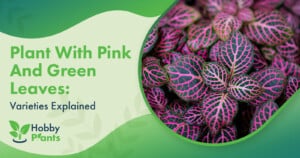The Pilea plant, also known as the Chinese Money plant and the Friendship plant, is an adaptable plant with distinctive coin shaped leaves.
They are fast growing and make a great plant for beginners. Thought to bring wealth and good fortune to the owners, the Pilea plant is often used as a housewarming gift.
We all know that plants are living things too, and just like us, they can get sick. Sometimes yellow leaves on a plant are nothing to worry about, but sometimes they can be an indication of a problem. So, what could cause yellow leaves on a Pilea plant?
The most common reasons why your Pilea leaves turn yellow are due to high humidity, various pests, or the wrong climate or temperature. Giving Pilea the wrong lightning can also cause yellow leaves.
In this blog post, we’ll explore some more information on the reasons why your Pilea’s leaves might be turning yellow, and what you can do to treat it.
Reasons Pilia Plants Gets Yellow Leaves
A number of conditions may be afflicting your Pilea plant and causing yellow discolored leaves.
1. Moisture
Pilea plants do not thrive in soaked soil. Allow the soil to dry out before watering again. Pilea needs to be watered more often in the summer, which is their growing season, and less often during the winter months.
Likewise, make sure you water consistently. One of the main causes of yellowing in the Pilea plant is alternating between very dry and very wet soil conditions. Pilea also do best with somewhat humid air.
2. Pests
Stressed and weakened plants can be more frequently attacked by pests. Pilea plants are susceptible to infestation by scale, mealybugs, and spider mites. These can all damage the plant and cause the leaves to turn yellow, brown, or fall off.
3. Temperature Stress
The Pilea plant does well in an average household temperature of 65 to 75 degrees F. It is important to note that the Pilea should not be placed close to heating vents in the winter, as the blasts of heat may result in leaves yellow and falling off.
4. Improper Lighting
This plant does best in brightly lit areas, but not in direct sunlight. Sunlight can burn the leaves, which will cause them to turn brown. While it can survive in low light, it often changes the coloration of the plant to either dark green or yellow and can result in the plant spreading out as it grows. This is rare.

Treatment
Moisture:
- Make sure the soil has had a chance to dry considerably before you water your Pilea plant again, as overwatering is common cause of problems for the Pilea plant.
- Well resistant to dry conditions, do not let your Pilea get too dry or remain very dry for a long period of time. They prefer slightly moist soil.
- Be consistent with your water. Make sure the soil does not become bone dry and then saturated. This causes stress to the plant and may result in yellowing and dropping of leaves.
- Water more frequently in the summer when the plant is growing and less frequently in the winter when it is dormant.
Pests:
- Pests sap your plant of vital moisture and weaken it with their sharp bites. Ensure you work to remove pests as soon as they are discovered.
- Remove mealy bugs from the plant, then wipe with alcohol on a cotton ball.
- Spider mites rinse away easily. Use a gentle flow of water from a spray bottle, hose, or place the plant in the shower to wash away the mites.
- Natural insecticides and insecticide soaps can be purchased to ensure your Pilea plant remains pest free after you have rid it of an infestation.
Temperature Stress:
- Keep your plant in a room with an average temperature of 65 to 70 degrees F.
- Do not leave your plant near heating vents. The hot air will result in yellowing and dropping of leaves.
Improper Lighting:
- Keep your plant in a brightly lit room but not in a window where they will receive direct sunlight.
- If you must keep your plant in direct light, consider putting a sheer curtain up over the window in order to protect it from being burned by the sun.
- If your plant is in a place without enough light, it will probably be able to adapt, but the color and shape of the plant may be altered.
The Pilea Plant
The Pilea plant hails from the southwestern Yunnan province of China, which is where it got its nickname the Chinese Money Plant. It was brought from China to Norway by a missionary in the 1940s and has only recently become popular in the United States.
It comes in two varieties, the Baby Tears version being the smaller of the two. The Pilea is aesthetically pleasing, unique looking, but also hardy and easy enough for even a beginner to care for. This pet is nontoxic to both animals and humans, so it makes a great plant for those with pets or young children.
Despite being a member of the succulent family, Pilea plants do best in bright indirect light as they are susceptible to being scorched by direct sunlight.
They adapt well to low light, but often spread out and their hue might change. They tend to lean towards the sun as they grow, so if you do not want a lopsided plant, make sure you rotate your plant periodically.
How to Take Care of the Yellow Leaves
Most yellow leaves will naturally return to their original color once you have improved the conditions to better suit your Pilea plant.
Some yellowing of the leaves is natural and expected. If your Pilea is pushing out new growth, older leaves at the bottom will often turn yellow and then fall. This is a natural part of the growth process and you should not be worried about it.
Conclusion
The Pilea plant is a unique plant that makes a great gift for a housewarming party. It doesn’t require much work outside the ordinary. As long as you are attentive to your watering schedule, keep your Pilea plant in a sunny spot with diffuse light.
Keep reading:
Victoria is the owner and main author of hobby plants. She loves spending her free time in her garden planting and taking care of her plants. Victoria hopes you enjoy the content here!
![Why Are My Orchid Leaves Turning Yellow? [Find Out Here] Why Are My Orchid Leaves Turning Yellow? [Find Out Here]](https://www.hobbyplants.com/wp-content/uploads/2022/07/orchid-leaves-turning-yellow-300x158.jpg)

![Why Is My Bamboo Plant Turning Yellow? [Find Out Here] Why Is My Bamboo Plant Turning Yellow? [Find Out Here]](https://www.hobbyplants.com/wp-content/uploads/2022/07/why-is-my-bamboo-turning-yellow-300x158.jpg)
![Why Is My Fiddle Leaf Fig Dropping Leaves? [ANSWERED] Why Is My Fiddle Leaf Fig Dropping Leaves? [ANSWERED]](https://www.hobbyplants.com/wp-content/uploads/2022/06/why-is-my-fiddle-leaf-fig-dropping-leaves-300x158.jpg)
![Why Are My Bird of Paradise Leaves Curling? [FIND OUT HERE] Why Are My Bird of Paradise Leaves Curling? [FIND OUT HERE]](https://www.hobbyplants.com/wp-content/uploads/2022/07/bird-of-paradise-leaves-curling-300x158.jpg)
![Why Are My Peace Lily Leaves Turning Brown? [EXPLAINED] Why Are My Peace Lily Leaves Turning Brown? [EXPLAINED]](https://www.hobbyplants.com/wp-content/uploads/2022/07/peace-lily-leaves-turning-brown-1-300x158.jpg)
